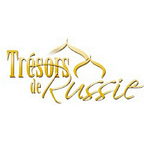The Meaning Of the Matryoshka Nesting Dolls
One look at these colorful and beautifully painted wooden dolls, and you’ll suddenly feel a cosmic-like force enveloping your spiritual being. The Russian nesting dolls, which are better known as matryoshka nesting dolls in their country of origin, embody a young yet still timeless depiction of a simple and fairytale-like early times. The traditional designs and patterns of the wooden dolls illustrate a scene that once existed in the 1800s. Each character seems to draw you into the earliest settings of a simple peasant life.
Whereas people have limited understanding of the nesting dolls, what they symbolize, and why they were made; very few have understood the tale that led to the creation of these wooden toys, as well as the reason they were named “matryoshka” in the first place. To find out the goal of the production of the Russian nesting dolls, it’s fitting to delve deeper into the story that led to their concept.
A Brief History of the Birth of the First Russian Nesting Dolls :-
Completed in 1890, the first set of the Russian nesting dolls were crafted by a woodworker named Vasilii Zvyozdochkin, and painted by an artist, Sergei Malyutin. It was believed that Vasilii wanted to create a wooden doll with hidden toys inside of it. They created a wooden peasant girl clothed in a traditional Russian attire complete with a headscarf. She was named “matryoshka” meaning “little matron”, also referred to as the Rooster Girl, since she is more known as the wooden doll holding a black rooster in her arm.
Inside the first matryoshka doll were seven more wooden toys, each having their own characteristic feature and attire: the second doll is of a female, the third another female holding a scythe, the fourth is yet another female holding a bowl of what people assumed is porridge, the fifth is of a boy holding a long object that is believed to be a broom or maybe a fork, another female doll is next in the set holding in her hands a sibling with no clear gender, the seventh is another young girl, and lastly, is a baby wrapped in a patchwork quilt.
In 1900, this set was then presented to the Exposition Universelle in Paris, France, where it received a bronze medal. Shortly after, the dolls gained popularity and began to be manufactured from many parts of Russia. Soon enough, matryoshka dolls not only became known nationwide but also exported worldwide.
Symbolism of the Matryoshka Dolls :-
When the early settling dolls were made, every one of them were given females as their greatest dolls. That is on the grounds that a few of the primary images of the matryoshka dolls were of portraying a lady’s richness and their parenthood. The state of the large bellied doll nearly depicted a mother’s strong figure and her importance in the family by the settling of her “youngsters” dolls inside.
Moms assume a major part in the customary Russian family; being the carrier of life and her capacity to duplicate her seeds are only some of them. In the nation, having a major family is considered as a typical practice and surprisingly a significant one; there are generally multiple kids, just as individuals from the more distant family live under one rooftop with them. Every individual from the family is accepted to play their own extraordinary part in the family, and it’s the mother who fills in as the establishment of the home.
Babushka Doll vs Matryoshka Doll :-
Matryoshka came from the Latin word “mater” which signifies “mother”. Along these lines, it was more than fitting for the settling dolls to be named “matryoshka dolls” in view of who and what they represent. In any case, individuals of the west are calling them “babushka dolls” rather than the first matryoshka; and albeit the term babushka is as yet connected with Russia, the name behind that holds something else altogether.
Babushka signifies “grandma” or “elderly person”. So, naming the settling dolls as babushka dolls obviously gives out the wrong importance of the Russian wooden toys. The dolls address a mother’s ripeness, thus, it was anything but a fit for them to be called accordingly. Notwithstanding, some propose that the dolls were incorrectly called babushka dolls due to their handkerchiefs, as the garment is truly called a babushka. Today, with the advancement of the presence of the settling dolls as they describe current individuals with present day clothing, it wouldn’t bode well to continue to call them babushka.
As time continually changes, so do the actual provisions of the matryoshka dolls change gradually. Each doll has developed from particularly unique to indistinguishably the equivalent for examples and plans, only divergent in size. Current occasions are starting to request present day characters. A bunch of Russian settling dolls can address current public government officials, strict divinities, an illustrious family, or a gathering of superstars. Whenever liked, the plans can be anecdotal like the characters of an animation show or a youngsters’ story. They don’t need to be anecdotal or non-anecdotal as you can decide on creature plans or nature views. For a really modified wooden doll set, one can have their own family as the plan.
It’s not difficult to accept that the matryoshka dolls are an incredible sight, and the demonstration of splitting the doll up just to uncover a more modest one inside is for sure an amazement for some. As they are generally considered as beautifications now and sometimes as toys, individuals can savor the straightforward delights in the customary occasions as though they were brought into the world in it. The traditional style of the matryoshka brings recollections of a day to day existence once appreciated, and the dolls are more than fitting to typify the meaning of a mother and her job in the family as one of the spines in the public eye.
